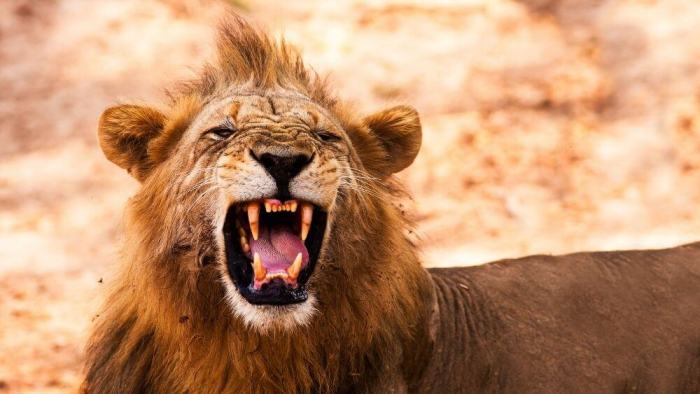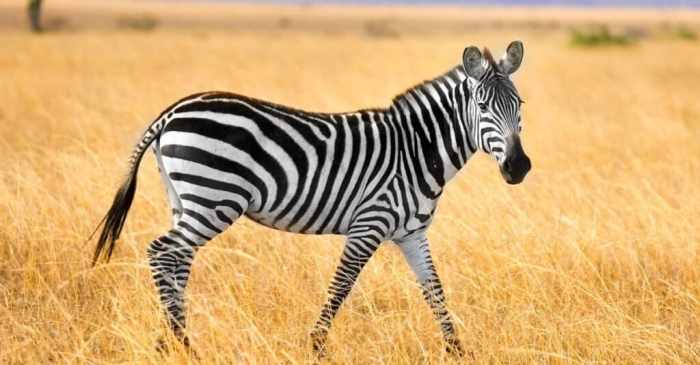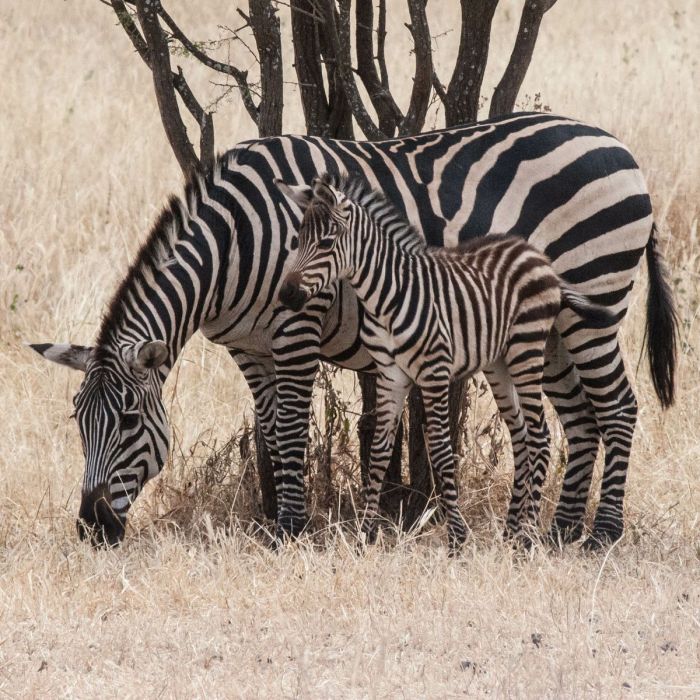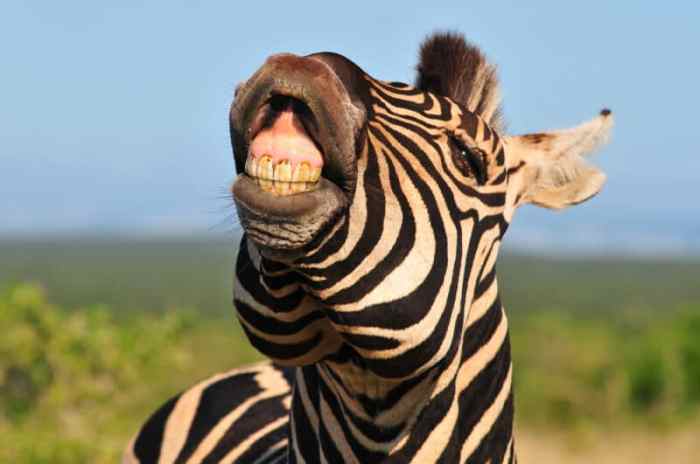Do zebras have sharp teeth? This intriguing question delves into the fascinating world of zebra anatomy and dental adaptations. Zebras, known for their distinctive striped coats, exhibit remarkable physical characteristics that have evolved to support their survival in their natural habitats.
Zebras possess specialized teeth that play a crucial role in their herbivorous diet. Their incisors, located at the front of their mouths, are designed for cropping grass, while their molars, situated at the back, are adapted for grinding and processing plant material.
This unique dental structure enables zebras to efficiently extract nutrients from their vegetarian meals.
Zebra Physical Characteristics
Zebras are renowned for their distinctive physical characteristics, primarily their striking black and white stripes. These stripes serve various purposes, including camouflage and social recognition. Zebras also have elongated bodies with relatively short legs, allowing them to cover vast distances in their African habitats.
Adaptations for Survival, Do zebras have sharp teeth
Zebras have evolved numerous adaptations to survive in their diverse environments. Their stripes provide excellent camouflage in grasslands, where they blend in with the shadows and vegetation. Additionally, their strong hooves enable them to traverse rough terrain and outrun predators.
Zebras also exhibit herd behavior, with individuals working together to protect the group from threats.
Zebra Teeth and Diet

Zebras are herbivores, and their teeth are specifically adapted to their plant-based diet. Their teeth are designed to cut and grind tough plant material efficiently.
Incisors
Zebras have sharp incisors located at the front of their mouths. These incisors are used for biting and cutting grass and other vegetation. The incisors are kept sharp by constantly grinding against each other, similar to how human incisors work.
Molars
Behind the incisors are the molars, which are used for grinding and chewing plant material. Zebra molars have a complex surface with ridges and grooves that help break down tough plant fibers. The molars are also continuously growing, which allows them to withstand the wear and tear of chewing.
Zebra Feeding Behavior

Zebras are primarily grazers, with a diet consisting mainly of grasses. They prefer short, green grasses and will often select the most nutritious parts of the plant. Zebras also consume other plant material, such as leaves, twigs, and bark.
Zebras are social animals and often feed in groups. These groups can range in size from a few individuals to hundreds of animals. When feeding in groups, zebras will often form a loose line or circle, with the lead animal setting the pace.
The lead animal is usually a mare, and she will often be followed by the other mares and their foals. The stallions will typically bring up the rear of the group.
Social Dynamics in Zebra Feeding Groups
There is a clear social hierarchy within zebra feeding groups. The lead mare is the dominant animal, and she will have first choice of the best food. The other mares and their foals will follow in order of rank. The stallions are at the bottom of the hierarchy, and they will often have to eat what is left after the mares and foals have finished.
Zebras are known for their distinctive stripes, but what about their teeth? While zebras do have teeth, they are not particularly sharp. In fact, their teeth are more suited for grazing on grass than for tearing flesh. Speaking of sharp teeth, have you come across the crossword clue “part of a chest”? Check it out here for a potential answer.
So, while zebras may not have sharp teeth, they do have a role to play in solving crossword puzzles!
Despite the social hierarchy, zebras are generally peaceful animals. They will rarely fight over food, and they will often share food with other members of their group.
Zebra Predators and Defense Mechanisms

Zebras are preyed upon by a variety of predators, including lions, leopards, cheetahs, and hyenas. These predators employ various hunting strategies to capture zebras, such as ambushing them from cover, chasing them down in open areas, or isolating individual zebras from the herd.
Zebras have evolved several physical characteristics and social behaviors that help them defend themselves against predators. Their distinctive black and white stripes provide camouflage, making them difficult to spot in the tall grass and dappled sunlight of their African habitats.
Group Defense
Zebras live in large herds, which offer protection from predators. When a predator approaches, the herd will often form a defensive circle, with the foals and weaker members in the center. The zebras will kick and bite at the predator, and their combined efforts can often deter the attack.
Speed and Endurance
Zebras are fast and agile animals. They can run up to 60 kilometers per hour (37 miles per hour) for short distances, and they have great endurance, allowing them to outrun many predators.
Warning Signals
Zebras have keen senses and can detect predators from a distance. When they sense danger, they will emit a high-pitched call that alerts the rest of the herd. This warning signal allows the zebras to take evasive action and avoid becoming easy prey.
Zebra Social Structure

Zebras are highly social animals that live in herds, ranging in size from a few individuals to over a hundred. Herds are typically led by a dominant stallion, who is responsible for protecting the group from predators and guiding them to food and water sources.
Mares and their young form the core of the herd, with younger stallions forming bachelor groups on the periphery.Zebra social behavior is essential for their survival and well-being. Herds provide protection from predators, as zebras are more likely to spot and evade danger when they are in a group.
Herds also facilitate access to food and water, as zebras can share information about the location of resources. Additionally, social interactions within the herd help to maintain the health and well-being of individual zebras.
Communication Methods
Zebras communicate with each other using a variety of vocalizations, body language, and chemical signals. Vocalizations include snorts, grunts, and whinnies, which are used to signal danger, attract mates, or maintain contact with other members of the herd. Body language is also important, with zebras using ear positions, tail flicks, and body postures to communicate their intentions and emotions.
Chemical signals, such as scent marking, are used to establish territories and attract mates.
Zebra Conservation Status

Zebras face several threats to their survival, including habitat loss, poaching, and competition with livestock. Habitat loss occurs due to human activities such as agriculture, urbanization, and mining, which fragment and degrade zebra habitats. Poaching for their skin and meat also poses a significant threat, particularly in areas with limited law enforcement.
Conservation Efforts
Conservation efforts are underway to protect zebra populations and their habitats. These efforts include:
- Establishing protected areas and national parks to provide safe havens for zebras.
- Implementing anti-poaching measures, such as increased patrols and surveillance, to deter illegal hunting.
- Conducting research to better understand zebra ecology and population dynamics, which informs conservation strategies.
li>Educating local communities about the importance of zebra conservation and encouraging their participation in protection efforts.
FAQ Overview: Do Zebras Have Sharp Teeth
Are zebra teeth sharp?
No, zebras do not have sharp teeth like carnivores. Their teeth are adapted for grazing and processing plant material.
What is the function of zebra incisors?
Zebra incisors are used for cropping grass and other vegetation.
How do zebra molars help them?
Zebra molars are used for grinding and processing plant material, extracting nutrients from their diet.